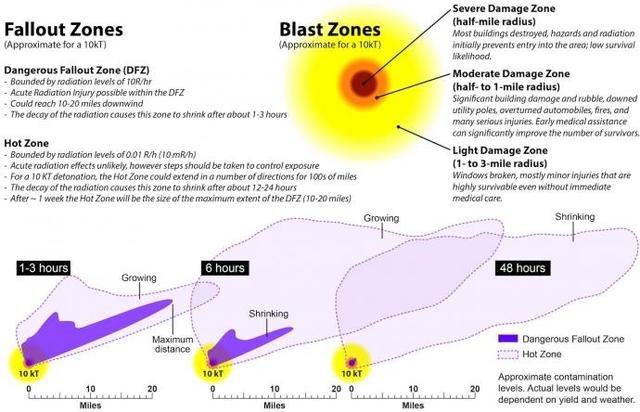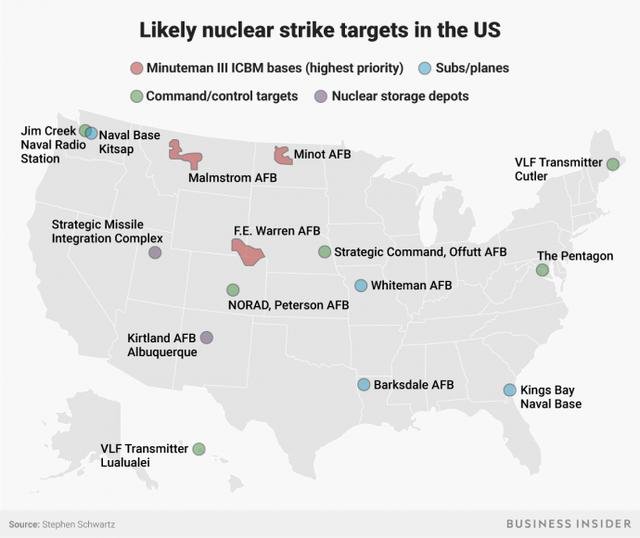The Russian president Vladimir Putin said that Russia has four new nuclear systems that are unstoppable, which have been devised to render the missile defense systems of the US useless. Putin even showed animations of the launches of missiles towards the USA and boasted that they could hit the USA in only a matter of minutes.
The nuclear system includes an underwater drone, an intercontinental ballistic missile, which comes with independent warheads, unlimited range cruise missiles, and hypersonic missile that can be fired from the jets.
Of course, the claims do have to be taken with a pinch of salt. However, one thing that is known is if there was a nuclear attack, the United States would not have much of a chance of defending itself and many millions of people would die in an instant.
North Dakota and Montana Higher Priorities in Nuclear Strike
Ever since the Cold War Russia and the United States have been drawing up plans on how they would wage a nuclear war against each other. Large population centers with cultural impact might seem to be the obvious choice; however, a smarter solution might put focus on countering the nuclear forces of the enemy. People living in Los Angeles or New York City might see themselves being the main targets of a nuclear strike, but Montana and North Dakota are higher priorities in the event of a nuclear strike. Author Stephen Schwartz talked about the costs and consequences of US Nuclear Weapons and said that when the Cold War progressed many improvements were made in nuclear weapons and technologies in the intelligence collection sector allowed for greater precision about where the weapons had been aimed. The emphasis moved from targeting big cities to nuclear stockpiles along with the infrastructure that was nuclear war-related.
Map Reveals Where Russia Might Choose To Strike to Destroy Nuclear Weapons
Below is a map that reveals the points Russia would probably choose to attack in order to destroy the nuclear weapons of the United States.
The map shows targets Russia might hit in an attack on the fixed nuclear infrastructure, command and control centers and weapons. However, even if there were a huge strike, it would not guarantee anything. Schwartz said that it would not be likely that an attack such as this would be a success. He went on to say there would be huge amounts of variables in being able to pull off an attack without a flaw and this is what would be needed. He said that all weapons would have to be destroyed as if even just a handful escaped the weapons missed would be fired back.
Even if Missile Silos in the US Were Hit, Nuclear Submarines Would Retaliate
Schwartz went on to say that even in the off chance that all the intercontinental ballistic missile silos in the United States were flattened, along with the stockpiled nuclear weapons and bombers capable of delivering nuclear bombs. The nuclear submarines of the US would still be able to retaliate. Schwartz said that at any time the United States had four or five submarines armed with nuclear devices on hard alert within their patrol area just waiting to receive orders to launch. He went on to say even the highest-ranking officials within the US military have no idea where the silent submarines are so there would be no way that Russia would be able to find them before they fired back. Firing back would be possible within a period of 5 to 15 minutes.
Fallout Could Bring Death and Destruction to the US
The United States positioned the majority of its nuclear forces strategically; these double as being targets and are far away from population regions. Schwartz said that there is 0% chance that Russia would be able to survive nuclear aggression towards the United States. Now we are living under a “nuclear sword of Damocles” said Schwartz, people living in large cities such as Los Angeles and New York should not worry about being hit by a nuclear weapon strike.

